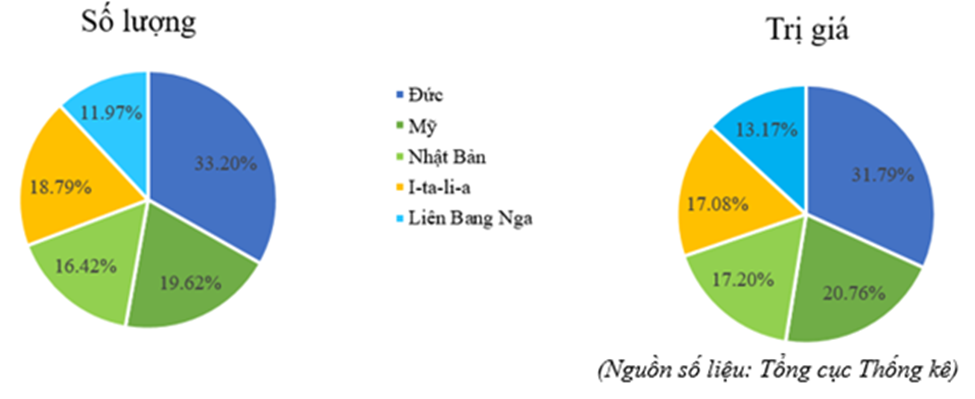Kiến thức về địa lí tự nhiên định hướng ngành nghề gì?
Hãy suy nghĩ và trả lời câu hỏi trước khi xem đáp án
Từ những kiến thức về địa lí tự nhiên (địa hình, khí hậu, thuỷ văn, đất đai, sinh vật và môi trường), các em có thể tham gia vào các hoạt động của ngành nông nghiệp như trồng trọt, chăn nuôi, thiết kế quy hoạch các công trình nông nghiệp, quản lý đất đai và bảo vệ môi trường.
Đáp án D
Câu hỏi liên quan
Một trong những mục tiêu của khu vực hóa kinh tế là
Xác định ý đúng: Nét vẽ nào thể hiện đường bao thấy?
Trong các câu sau:
I. Nước giếng này trong mà lại gần nhà.
II. Họ chưa hiểu rõ cái gì là ưu điểm, cái gì là hạn chế trong nền kinh tế thị trường.
III. Chi hội bảo vệ thiên nhiên được thành lập nhằm tăng cường các hoạt động giáo dục về bảo vệ thiên nhiên trong nhà trường.
IV. Mới vào bộ đội, chúng ta thường được nghe cán bộ phổ biến: nam phải cắt tóc ngắn, nữ thì cuộn, tết tóc lên cao, râu phải cạo nhẵn.
Những câu nào mắc lỗi?
Hiến pháp Việt Nam được cơ quan nào xây dựng?
Tốc độ quay của động cơ là chỉ số vòng quay của:
Tế bào có thể tự điều chỉnh quá trình chuyển hóa vật chất bằng cách nào?
Gọi \(S\) là diện tích của hình phẳng giới hạn bởi các đường \(y={{2}^{x}}\), \(y=0\), \(x=0\), \(x=2\) Mệnh đề nào dưới đây đúng?
Carbohydrate được cấu tạo từ những nguyên tố hóa học nào?
Read the following passage about the Pathways from Today's Actions to Tomorrow's World and mark the letter A, B, C or D on your answer sheet to indicate the best answer to each of the following questions from 31 to 40.
As we stand at the crossroads of environmental decision-making, the actions we take today will shape our world in 2050. Scientists warn that we're skating on thin ice with current consumption patterns and carbon emissions. Global temperatures could rise by 2-4 degrees Celsius unless significant changes occur within the next decade. Many countries have pledged to achieve carbon neutrality by 2050, but these promises require immediate implementation. Individual choices in transportation, energy usage, and consumption can collectively influence whether future generations inherit a sustainable planet or face severe climate consequences.
[I] Technological innovation represents our greatest hope for addressing environmental challenges by 2050. [II] Renewable energy sources like solar and wind are becoming increasingly affordable, potentially replacing fossil fuels entirely within thirty years. [III] Electric vehicles may dominate transportation networks, while vertical farming could transform food production in urban areas. [IV] However, these technological solutions must be developed and deployed equitably to avoid creating new disparities between wealthy and developing nations.
Social structures will undergo dramatic transformation by 2050 as demographic shifts reshape communities worldwide. Aging populations in developed countries will necessitate new approaches to healthcare, retirement, and social support systems. Meanwhile, climate migration may force millions to relocate from vulnerable coastal and drought-prone regions. Education systems must evolve to prepare our students for jobs that don't yet exist, emphasizing their adaptability and lifelong learning. Cities will need to become more resilient, incorporating green spaces and sustainable infrastructure to support growing populations.
Economic models must fundamentally change by 2050 to balance prosperity with environmental responsibility. The traditional focus on continuous growth may shift toward measuring success through wellbeing indicators rather than GDP alone. Circular economy principles will likely replace linear production models, with products designed for reuse and recycling. Resource-sharing platforms may become more prevalent, reducing individual consumption while maintaining living standards. Companies implementing genuinely sustainable practices will thrive, while those clinging to environmentally harmful methods may disappear entirely. The transition presents both challenges and opportunities for businesses willing to embrace innovation and sustainability.
The word “their” in paragraph 3 refers to _________.
Phát triển không qua biến thái có đặc điểm gì?
Phương trình \({\log _3}\left( {{x^2} - 3x - 5} \right) = {\log _3}x\) có bao nhiêu nghiệm?
Các chủ thể kinh tế trong cơ chế thị trường tác động qua lại với nhau nhằm mục đích gì?
Ở nước ta có bao nhiêu chủ thể chính tham gia trong nền kinh tế?
Choose A, B, C or D to make a complete dialogue for each question.
a. I don’t know. Have you tried contacting the airline?
b. My flight has been delayed.
c. No, I haven't tried that yet.
d. Oh no, that's terrible! How long is the delay?
e. I've tried that, but they couldn't give me a definite answer.
f. That's strange. It was supposed to leave on time.
Hai biểu đồ dưới đây cho thấy tỉ trọng số lượng và trị giá xuất khẩu cà phê của Việt Nam năm 2021 phân theo nước và vùng lãnh thổ:

Giả sử năm 2021, xuất khẩu cà phê của Việt Nam đạt 1,52 triệu tấn, trị giá đạt 3 tỷ USD.
Giá bán trung bình một tấn cà phê xuất khẩu sang I-ta-li-a khoảng bao nhiêu USD?
Tác giả nào KHÔNG trưởng thành trong cùng thời kì với các tác giả khác?
Mark the letter A, B, C, or D on your answer sheet to indicate the underlined part that needs correction in each of the following questions.
Of the four dresses, which is the best expensive?
Phương án nào sau đây nêu đúng giá trị chuyển đổi sang KB của 8GB?
a. Rachel: My little brother always comes into my room without knocking.
b. Olivia: Oh, that's annoying! Do you have a lock on your door?
c. Rachel: No, but I wish I did. I need some privacy.
Choose A, B , C or D to complete the dialogue.
Boss: "Should we expand the marketing budget or invest in product development?"
Employee: "______"















